

19 Academic Writing Tools (that are completely free!)

A selection of tools for academic writing – from collaborating, time-tracking and project management to finding the perfect phrase or translation. We are continuously updating this list (latest update: April 2023).
I often get asked about my favourite academic writing tools. That’s why I compiled this scientific tools list for you with 19 great tools to support your academic writing. You can use all these scientific research tools for free and some of them have paid versions with additional features.
Just one word of caution: Exploring new academic writing tools can be a time-suck and distract you from getting your actual writing done. If you are one of those people who spend hours signing up for new software for academic writing and getting it set up, only to abandon the tool a few days or weeks later – then be careful reading this scientific tools list, and don’t get overenthusiastic. 😉
By the way, I don’t have any affiliation with any of the academic writing tools listed below, and none of these are affiliated links.
Here, we go, 19 tools for academic writing and scientific research I recommend in no particular order:
ACADEMIC Writing tools
1. writefull.
This proof-reading tool for scientific texts is powered by AI and big data. You can integrate the Writefull app into Word or Overleaf for free. A reader of the blog brought my attention to this tool (thank you so much!) and I’ve only recently started using it, so I can’t give you a full-blown review just yet but so far the results are promising. Writefull is owned by Digital Science, a company that has released several Open Science apps, such as figshare, Overleaf and Altmetric.
2. Phrasebank
Created by Dr John Morley from “The University Language Center” of Manchester University, the Phrasebank is a database of common phrases used in papers, dissertations and grant proposals – a real goldmine!
The phrases are organised both by the common sections in a paper such as the Introduction, Methods, Results or Discussion section. For example, in the tab for the Introduction section, one can find entries for “establishing the importance of the topic for the world or society” or “identifying a knowledge gap in the field of study”. If you click on the latter, you can find among others the following suggested phrases: “It is still unclear whether…”, “However, the behaviour of X has not yet been investigated” and “Causal factors leading to X remain speculative”.
You can also look for phrases by choosing a general language function. Some of the choices are “being cautious”, “describing trends”, “signalling transition”.
The Phrasebank is very useful to get inspiration for new wording but I do not endorse all entries. Sometimes you find language that is a bit clunky or overly complicated so do use your own judgement when you browse this academic writing tool. PS: You can also download the Academic Phrasebank as PDF or Kindle file.
3. Thesaurus.com
If you’re looking for synonyms, thesaurus.com is the best online thesaurus I’ve found so far. It divides the synonyms based on different meanings of the word and indicates the relevance of the synonym by using three shades of orange.
Just one word of caution: Don’t fall into the trap of using too many synonyms in your academic writing. Being precise is so much more important than varying the words you are using in your writing. In particular for field-specific terminology, I advise against using synonyms .
This is a hot tip for researchers who need to transcribe interviews (hello, social scientists!), who like to record research ideas or those who like to write by dictating text into their phone. Otter is an AI-based transcription tool that works for English language recordings. The quality of the transcriptions is comparable to other transcription services using AI, meaning they are often not accurate and can give nonsensical, even comical results — especially when the recorded voice has a strong or unusual accent. Still, the automated and quick transcriptions (real time transcriptions are available too!) can be a good starting point and are a huge time saver. What’s cool about Otter compared to its competitors is that they give you 300 minutes of transcriptions per month for free!
There are many online dictionaries but Linguee is my favourite for academic writing. It suggests a translation on the basis of previous translations published on the internet. Therefore, this dictionary is especially great if you’re looking to not only translate a word but a certain turn of phrase or idiom. Linguee translates to and from English in over 20 languages. An essential academic writing tool for all non-native English speakers!
ACADEMIC WRITING TOOLS FOR Collaboration AND CO-WRITING
6. authorea.
The magazine “ TechCrunch ” describes Authorea as “a Google Docs for scientists”. On the academic writing platform, you can write, edit, and insert citations, figures and data. And it’s great for collaborative writing: Co-authors can access the same text at the same time, track the changes they made, insert comments and even live-chat during writing sessions. Documents can be imported from LaTeX and Word and exported as LaTeX, Word and PDF documents. You can also submit your article as a bioRxiv preprint straight from the Authorea platform. This software for academic writing is free for up to ten documents with limited sharing options.
7. Overleaf
Overleaf is to LaTeX users, what Authorea (see tool #6) is to Word users: an online editor that allows you to access and collaborate on your writing projects from anywhere. You can, for example, invite others to comment on your work. Overleaf offers some other neat collaborative writing features, such as a track-changes function, but – unfortunately – only on the paid plan. LaTeX may seem a bit intimidating at first but you actually get the hang of it quite fast (and feel like a coder 😎). Also, in my experience, you save a lot of time formatting your text (and feel smug about it when you talk to Word users 😁).
Slack is a chat tool that you can use in your lab or with your collaborators. Used in the right way, it allows you to save time by cutting down on emails and create a group atmosphere even if the members are not working in the same location. You can easily add files to the chats and create different channels for subgroups or certain topics. There also exist virtual communities on Slack you can join, such as the New PI Slack community for Assistant professors around the world.
Loom is a great scientific research tool when you want to share a quick video with a colleague, student or collaborator. This could be a recorded presentation or lecture, your comments on the paper of a co-author, or a tutorial on using a piece of software. You can record your screen, camera and microphone. The neat thing is that after you’re done recording, Loom auto-generates a link you can share.
Academic writing tools for Productivity and project management
Toggl is a time-tracking app that you can install on your phone and computer. There’s only one way of knowing how long certain writing tasks typically take you, and that is by tracking the time they took you to complete . Time-tracking has another great advantage: You can identify time-sucks in your day. And these may be less obvious than you think.
I like to use Toggl for time-tracking because it’s quick to use and integrates with various other scientific research tools I am using. You just need to click the big red power button to start or stop a recording and assign tracked times to different projects. This scientific research tool has paid plans but for most people the free basic plan will be sufficient.
Are you easily tempted to check your phone when you really should be writing? This app called Forest may be just right for you then. Once installed on your phone, you can start planting a virtual tree whenever you want to focus. It grows from a little plant to a full-grown tree. When you pick up your phone and leave the app, the tree dies. This way, you can build your forest representing the time you have spent on focused work (or quality time with your family and friends…). I’m not using Forest myself, but I’ve heard that it works really as an academic writing tool well for some people. Give it a go!
12. Focusmate
As Forest (see tool #11), Focusmate is an app to help you stay focused. Instead of gamification, the concept of Focusmate is based on social accountability. Here is how it works: You schedule a 50-minute virtual co-writing session with another Focusmate member, turn on your webcam when your session starts, greet your temporary co-worker and then get to work silently.
Even though being filmed while working is a little strange in the beginning, co-writing sessions work really well for a lot of researchers. This is why we offer co-writing sessions as part of our academic writing program, the Researchers’ Writing Academy, as well.
13. Cold Turkey
If Forest (tool #11) or Focusmate (#12) don’t get you to focus on your writing, you may need to go Cold Turkey . This software for academic writing blocks any other application and turns your computer into a typewriter. You can choose whether you want Cold Turkey to prevent you from digital distractions for a certain amount of time or until you’ve hit a certain word count. With the paid version, you can even access integrated productivity soundtracks and text formatting.

Not an app exactly, but free as well: Click the orange button below to have me walk you through my step-by-step system to write clear & concise papers for your target journals in a timely manner . This free academic writing training is perfect for you if you’re reading this blog post because you are procrastinating on writing your paper.
Trello is an excellent project management tool for your academic writing, which you can use for managing each of your writing projects, for creating a publication pipeline and as a daily and weekly to-do list. Trello is a great introduction into project management because it’s a lot easier to learn and use than most other project management software. For each project called a “Board”, you can create different “lists”, which are vertical collection of “cards”, which you can move between lists. You can add due dates, checklist lists, links, files and text to each card. To work collaboratively, you can leave comments on cards and assign them to members on your team. You can also use Trello as a brainstorming tool, using the cards just as you would use post-it notes.
Members of my online course, the Researchers’ Writing Academy , get access to Trello templates I created to easily manage their publication pipeline, the writing process for each of their scientific papers and all of their other daily, weekly and monthly tasks and projects.
15. Todoist
Todoist is an alternative to Trello (see tool #16) or can be used in addition. It’s an online to-do list organiser and project management tool that comes as an app and browser version. You can organise your tasks in projects and schedule them for a certain day. This academic writing tool shows you today’s tasks as well as those for the next seven days. It also tracks your productivity, i.e. how many tasks you have completed.
academic writing Tools for finding and reading the literature
Feedly is a neat RSS feed manager that helps you stay up to date with the scientific literature. Instead of getting email alerts from journals (because who wants to get more emails…) you can view and organise the literature you are interested in by following journals’ RSS feeds. You can not only use this for scientific literature but also subscribe to blogs, for example the one you’re reading right now, by simply putting the URL in the Feedly search: https://annaclemens.com/blog .
Are you a mindmapper? Then you need Xmind , a free mindmapping and brain-storming tool. It’s intuitive, looks good and does exactly what you want a mindmapping tool to do. The free version allows for embedding of hyperlinks, images, attachments, so you can really use it however you like! That’s all I can really say about it as I’m not using mindmapping myself. But I know scientists who swear by it!
18. Audemic
Audio formats have become so popular (I’m a big podcast lover myself!) so it shouldn’t really come as a surprise that there now is an audio tool available for the scientific literature too: Audemic . This tool — completely free to use for individual researchers — creates summaries for you (that go beyond the abstract), lets you skip sections, highlight text and take notes while listening.
There are a few reference managers for your academic writing to choose from, some of which cost money. Zotero is free, open-source and doesn’t lack in functionality. You can easily save references from your browser, organise them in folders and with tags and create bibliographies with the right style. You can also create a citation library with your co-authors or share your library with others.
That’s it: 19 academic writing apps and scientific research tools to support your writing for free! However, the best academic writing software won’t make you more productive if you don’t rely on a streamlined writing process and if you aren’t using your writing sessions effectively. If you want to get your hands on a template to write scientific papers in a systematic fashion, sign up for this 1-hour writing training now. It’s free too!

Share article
© Copyright 2018-2024 by Anna Clemens. All Rights Reserved.
Photography by Alice Dix
An official website of the United States government
The .gov means it’s official. Federal government websites often end in .gov or .mil. Before sharing sensitive information, make sure you’re on a federal government site.
The site is secure. The https:// ensures that you are connecting to the official website and that any information you provide is encrypted and transmitted securely.
- Publications
- Account settings
Preview improvements coming to the PMC website in October 2024. Learn More or Try it out now .
- Advanced Search
- Journal List
- PLoS Comput Biol
- v.16(11); 2020 Nov

Ten simple rules for writing a paper about scientific software
Joseph d. romano.
1 Institute for Biomedical Informatics, University of Pennsylvania, Philadelphia, Pennsylvania, United States of America
2 Department of Epidemiology, Biostatistics, and Informatics, University of Pennsylvania, Philadelphia, Pennsylvania, United States of America
3 Center of Excellence in Environmental Toxicology, University of Pennsylvania, Philadelphia, Pennsylvania, United States of America
Jason H. Moore
Papers describing software are an important part of computational fields of scientific research. These “software papers” are unique in a number of ways, and they require special consideration to improve their impact on the scientific community and their efficacy at conveying important information. Here, we discuss 10 specific rules for writing software papers, covering some of the different scenarios and publication types that might be encountered, and important questions from which all computational researchers would benefit by asking along the way.
Author summary
Computational researchers have a responsibility to ensure that the software they write stands up to the same scientific scrutiny as traditional research studies. These 10 simple rules make doing so easier by enhancing usability, reproducibility, transparency, and other crucial characteristics that aren’t taught in most computer science or research methods curricula.
Introduction
In recent decades, scientific software has become a critical feature of virtually all research workflows [ 1 ]. Computational researchers and informaticians, therefore, have a responsibility to release and disseminate software in the same scientifically rigorous manner as other research protocols, datasets, and empirical studies released into the scientific community. Writing (and publishing) a peer-reviewed paper about a newly developed scientific software is arguably one of the best ways to do this—“software papers” can reach a massive number of potential users (even acting as advertisement for the software), are a great way to show that the software stands up to scientific scrutiny, and allow users to easily reuse and cite the software in their own research.
However, software papers are fundamentally different from other “traditional” research articles. The process of designing and implementing software is different from designing and carrying out bench experiments, clinical studies, or raw data analyses [ 2 ]. There are also differences in the “final product” of the research: Software studies, obviously, yield a piece of software to be directly reused, whereas other study paradigms provide new protocols, specific findings, and follow-up questions or hypotheses.
There are basically 2 types of software papers: (1) stand-alone papers that solely describe the software, usually in a shorter format than an article written about a traditional research study; and (2) a (more traditional) article describing an original research question that includes development of a piece of new software as one of its critical components. Examples of the former include the original papers describing Biopython [ 3 ], scikit-learn [ 4 ], and SAMtools [ 5 ]. The latter includes the papers that introduced Gene Set Enrichment Analysis [ 6 ], the Connectivity Map tools [ 7 ], and VIPER [ 8 ]. Although these options produce 2 very different styles of paper, the 10 simple rules presented below largely apply to both of them.
Rule 1: Read the other “Ten Simple Rules” papers on coding
In order to have a good software paper, you first need to have good software. All of the other rules for writing great scientific software apply here, especially those that are already covered in other “Ten Simple Rules” articles. All impactful scientific software should aim to be robust [ 9 ], well documented [ 10 ], easy to use [ 11 ], and maintained under version control [ 12 ]. The advantages of making your software open source (with transparent licensing terms) and hosted on public repositories are widely acknowledged [ 13 ] and should be practiced regularly, unless there is a compelling reason not to. Evaluations, use cases, and demonstrative examples should make use of high-quality data that is ideally already well characterized [ 14 , 15 ].
Rule 2: Know the most appropriate publication venues and submission types
Journals and conference proceedings that focus on computational areas of research frequently have article types that are dedicated specifically to descriptions of new software or databases, and these can be a great venue for disseminating information quickly, concisely, and to an audience with an assumed level of technical proficiency. It’s good to think early and reconsider often when finding a specific journal or conference. Make sure to pay special attention to any nonstandard requirements that journals impose—some require evaluations to use real (i.e., nonsynthetic) data [ 16 ], others have special reporting or data/software deposition requirements [ 17 ], and you should always consider whether your software (and desired paper style) match the mission statement and/or goals of the journal or meeting. Discussions with mentors, collaborators, and other colleagues can be hugely beneficial in this context; their past successes and failures can end up saving you from submitting to an unsuitable journal (and all of the headaches that come with it). Some examples of popular submission types and journals for software papers include Bioinformatics (submission type: “original papers” or “application notes”), Nucleic Acid Research’s yearly “Database issue” and “Web Server issue,” and PLOS Computational Biology’s “software articles.”
Rule 3: Publish for users, not developers
In spite of Rule 2, you should always consider submission to noncomputational venues. As computational researchers, we often work in highly interdisciplinary areas, writing software that makes research in other fields easier, more efficient, and more scientifically robust. Scientists working in these fields are often extremely interested in hearing about new software tools that will help them on a daily basis, but they may not frequently search computationally focused journals or conference proceedings. Especially if the software is meant to be easily accessible to bench scientists or other noncomputational stakeholders, describing your software in a domain-specific journal is an excellent way to reach a wider audience. Furthermore, a paper describing an innovative new software tool in one of these journals has a great chance of standing out in comparison to other articles, especially when the field has highlighted a need for new software approaches to long-standing challenges.
However, a few things need to be kept in mind, especially when publishing in a noncomputational journal or conference. If software papers are uncommon in your field, there may not be an ideally suitable publication/article type, and you may need to be creative in how you organize your presentation of the software and your evaluation of its performance. Specifically, think of how your software can address a particular limitation or research question of interest to the field, and show an example demonstrating that it can do so. This can become a primary focus of the paper, or it can be one of several shorter “case studies” that show off useful functionality. Think about the story you want to tell, and what your target audience would find the most useful. Similarly, reviewers might be unfamiliar with how to assess and critique software papers. When in doubt, it never hurts to contact a journal editor or program committee member for guidance—they might even be able to direct the article to a set of reviewers they know have the needed technical expertise. If the publication venue asks authors for reviewer suggestions, you should be able to come up with a similar set yourself. You should also keep your readers in mind: If most of your intended audience have limited computational experience, you should actively cut down on jargon and technical details. These details can be added as supplemental data, published separately as a nontraditional article (e.g., via Zenodo, F1000, or similar), or even be moved entirely to online documentation (see Rule 6).
Good illustrative examples of software papers published in noncomputational journals are plentiful. Many older software papers were published in domain-specific journals, since most of the interdisciplinary fields that eventually led to computationally focused journals were still emerging. This can be seen, for example, in computational phylogenetics and cladistics, a field that began as early as the 1970s [ 18 , 19 ]. More modern examples of highly impactful software papers in domain-specific journals are also plentiful, like those introducing PLINK [ 20 ] and Circos [ 21 ].
Rule 4: Create a long-term software management plan
In academia, affiliations, funding sources, and technology infrastructures change frequently. Researchers therefore assume a level of responsibility for keeping the products of our research available to the rest of the scientific community when things do change. When you release a new piece of software or body of code, you should establish guidelines to help ensure its persistence—otherwise, your papers, and those of others that rely on the software, will be negatively impacted. These guidelines form what can be thought of as a “software management plan” [ 22 , 23 ]. To create one, it can be helpful to ask yourself and your coauthors the following questions:
- Who is responsible for maintaining the software in the future, should affiliations change? The first author on the paper, the lab’s principal investigator (PI), or someone else?
- What is the cost (if any) of keeping the software and any related resources—relevant databases, web apps, application programming interfaces (APIs), etc.—online? What is the funding source? How will it be funded if this source is exhausted?
- Who owns the intellectual property (IP) behind the software? This is often the institution or company that employs the paper’s PI, but it may be different, and it may affect how the software is maintained in the long term. Furthermore, it is crucial to know how ownership of the IP will affect licensing [ 24 ]. Generally, it’s good practice to adopt the most permissive license that doesn’t violate ownership or usage/privacy policies.
- Will updates and bug fixes be provided? If the updates are major, will follow-up papers be published (see Rule 9)? Are any regular maintenance activities necessary, and if so, who will perform them?
- What will happen to the software if data or other resources it relies upon are no longer available?
- When and how will you archive the software? Online code repositories (e.g., via GitHub) make doing so easy, and tools like Zenodo and FigShare let you tie permanent DOIs to specific archives (see Rule 5).
Generally, software management plans aren’t outlined in the actual body of software papers, but an idea of how the lifecycle of the software will be handled—along with general policies and strategies for maintaining the software—are often included in online code repositories, such as in “Contributing” guides or the software’s README (e.g., [ 25 – 27 ]). General tips and guides on developing software management plans are in ample supply online [ 22 , 23 ].
Rule 5: Safeguard against “link rot”
As papers age, it’s unfortunately quite common for hyperlinks to permanently break—the resource they point to has moved, has been taken offline, or affected by some other internet-related issue. This is known as “link rot,” and it is not just contained to academic articles—link rot can affect blogs, social media posts, web pages, and other digital resources [ 28 ]. However, it is especially prevalent in scientific articles—a 2013 study by Hennessey and Ge found that the median uniform resource locator (URL) lifespan is 9.3 years, with some falling far shorter than that mark [ 29 ]. While blogs, README documents, and source code can be edited to point to new links, peer-reviewed papers are static—unless you issue a correction or erratum, the URL you use at the time of publication is the URL that will be in that paper permanently.
Several relatively easy steps can be taken to prevent link rot in papers about scientific software. Institutional affiliations and website structure can change (as mentioned in Rule 4), so it is best to host web apps, APIs, software descriptions, example code, and other digital resources either on a dedicated domain, an independently hosted lab website, or on a free web hosting resource (e.g., using GitHub Pages). However, be familiar with how the host handles persistent links. For example, links on GitHub Pages sites can break if a repository is transferred to a new owner. When digital resources do need to move to a new URL, you should make an effort to set up URL redirection from the old location to the new location, which can usually be arranged with web server administrators. You should also set up persistent versioned releases of software and assign separate DOIs to point to the current software release at the time of the paper’s publication. Zenodo (for software releases tagged on GitHub) and FigShare (for data files, scripts, and other digital resources) are free services that track permanently archived research materials and assign DOIs that basically “solve” link rot when used effectively. Also, having a well-documented system for assigning meaningful URLs to individual resources can help to diagnose the cause if links do break. For example, “http://<domain>/protein/BRCA1” is likely far better than “http://<domain>/540/65df7.php?id=18427,” both from a usability and a maintenance perspective.
Rule 6: Make a clear distinction between code documentation and research results
Whenever software is intended for reuse, high-quality documentation is crucial. However, peer-reviewed papers are arguably not where documentation should be presented. The paper should describe the software (including the design process, technical details, and algorithmic innovations) and any accompanying analyses. Any time you include code in the paper, you’re making a commitment to support the syntax and semantics in the code. Since it’ll be permanently visible to scientific users, changes that break the example code will likely lead to confusion and potentially result in alienating the users. If it’s especially important to show usage examples or other instructions on how to use the software, and they occupy more than a small handful of sentences, they should either (1) be moved to an appendix or supplemental materials document; or (2) be placed in the code’s documentation. If you have dedicated documentation pages online, it’s a great idea to provide a link to those pages in the body of the paper. To ensure consistency, the documentation should also be version controlled, and the link in the paper should point to the version of the documentation that is current at the time of writing. As a side note, sample input/output and example code that support results presented in the paper can also be placed in the software’s version control system and even integrated into the software’s test suite as acceptance tests [ 30 ].
Rule 7: Be current with modern tooling and best coding practices
Many of the choices you make in the development of your software itself can have a profound effect on the longevity and scientific impact of the paper that describes it. If the software solves an important unmet need, yet is challenging to install, written in an obsolete programming language, and filled with bugs, it probably will not attain widespread use. Similarly, the paper would stand a high likelihood of falling by the wayside, if it even passes peer review. Fortunately, a relatively small amount of advance planning during the early stages of development can help avoid this particular issue. We find that the following guidelines are helpful here:
- Use a well-maintained programming language that runs on most modern systems.
- Publish your software on at least 1 packaging index so that users can install it with a single command. Using a continuous integration (CI) service can automate this process and reduce the likelihood of human error [ 31 ].
- Similarly, if possible, distribute your software both as raw source code and as a packaged or compiled version.
- As mentioned before, provide detailed documentation and instructions for use.
- If possible, provide ways for users to contribute to future development, especially in terms of bug fixes and requested features.
Doing so is also important for more fundamentally pragmatic reasons: A good way to encourage widespread use of software is to make it easy to install and use and to give it a fresh, modern look. Although this is not directly related to the scientific quality of the software or the paper, dissemination of research and research tools is an important part of the scientific process and should always be given special thought.
Rule 8: Maintain consistency between code, documentation, websites, and papers
By its very nature, any software paper needs to manage references to (and between) an ecosystem of digital resources describing the software, including websites, source code repositories, documentation, example code, blog articles, and other media types, all of which refer to the same piece of software. Make sure to maintain consistency across this ecosystem. Use the same spelling, punctuation, and capitalization in any names you make up for your software. If you create a logo for the software, use it in multiple places. Make heavy use of links between different sites and resources so readers can find what they are looking for quickly and easily. An easy trick for ensuring version consistency is to include version numbers directly in URLs, where appropriate. For example, documentation pages might be given the URL “http://<domain>/version1/doc.” If the software is part of a larger body of research that has produced other pieces software, it might be a good idea to establish a naming system to indicate the relationship, while ensuring that each can be easily referred to without ambiguity. Don’t force acronyms in your naming either—keep acronyms simple or avoid them entirely.
Rule 9: Plan for follow-up publications and update the software accordingly
More often than not, software development does not end after its first major release—rather, developers add new features and respond to bugs or other performance issues. This definitely applies to scientific software, too, which stems largely from the fact that good research is usually iterative [ 13 ] and conducted in stages that are either planned from the outset or guided by the successes and failures of earlier steps. Writing several papers along the way is more than a ploy to inflate citation metrics or boost a curriculum vitae (CV); it is a demonstration of rigorously following the scientific process, and it allows you to rapidly disseminate new findings to the community.
However, it is also important to know when it’s appropriate to write a follow-up paper. Things like bug fixes or minor usability enhancements are better suited for blog posts, version release notes, or message board/issue tracker threads. Discuss whether a new update constitutes a new scientific advancement and if that advancement solves a need that your user base currently faces. Generally, we aim to publish a new paper for every new major feature that is associated with a specific outstanding research question. For example, an ongoing project within our research group is the development of the Tree-based Pipeline Optimization Tool (TPOT)—an automated machine learning tool that uses genetic programming to automatically find machine learning pipelines that perform well on a given dataset [ 32 ]. In addition to the original publication describing TPOT, we have written follow-up papers for several major additions to the software, including new ways to specify pipeline templates [ 33 ] and support for deep learning [ 34 ].
Rule 10: Prioritize visibility and availability
There is a frustrating scenario that plays out often when performing computational research: You find a paper describing a piece of free, publicly available software that perfectly solves a problem you have been struggling with for several weeks. The paper is a bit old, but the methods seem elegant and robust. However, after finally tracking down a copy of the software, you find that there is no way to make it run on any modern operating system. You spend a few hours trying to track down its (apparently nonexistent) documentation, and eventually give up, deciding that it is either impossible to get the software running or that it will simply take less time to implement it yourself. Problems like these can’t be entirely avoided—software ages, programming languages eventually fall out of favor, and dependencies change in ways that you as a user cannot fully control. However, as a developer, you can take steps to effectively prolong your software’s life, and some of these steps can be implemented directly in the paper that describes the software.
First, redundancy does not hurt. If you have a main informational website for the software, include a link in the paper, as well as on the source repository, in the documentation, and on lab and institutional websites. Make use of social media to promote your work and encourage coauthors to do the same [ 35 ]. A popular metric for determining the social impact of an article is the Altmetric Attention Score [ 36 ], which uses not only citation count but also things like social media mentions, news coverage, and representation in popular science publications. “Badge icons” (sometimes known as “shields”) used on websites, code repositories, and package indexes let you provide rich links to different parts of your software ecosystem (including the paper itself via DOIs) that are dynamic, informationally dense, and visually appealing. Finally, both your software paper and associated media related to the software can be optimized for search engines, which can dramatically increase their scientific impact [ 37 ].
Many of these apply in reverse, too. Once your paper is published (and prior to that, if you release a preprint), your websites and code repositories should point back to the paper, using its DOI when possible. It’s also helpful to explicitly instruct users how to cite your work and provide preformatted citations in several popular styles and/or B ib TEX/EndNote/etc. files that can be exported directly to citation management software.
Software papers are an important component of the scientific research ecosystem, benefiting users in many domains and with widely varying levels of computational expertise. Furthermore, academic publications (and their citations) currently provide the primary means by which scientific software developers and maintainers gain recognition for their work (fortunately, efforts are currently under way to change this—for example, [ 38 , 39 ] show how code contributions can be used as directly citable scholarly works). Following these 10 simple rules will help to ensure your software papers are easy to use, scientifically rigorous, and resistant to future changes in technology.
Funding Statement
This work is funded with support from NIH grants R01LM010098, R01LM012601, R01AI116794, UL1TR001878, UC4DK112217 (PI: Jason Moore), and P30ES013508 (PI: Trevor Penning). The funders had no role in study design, data collection and analysis, decision to publish, or preparation of the manuscript.
- Resources Research Proposals --> Industrial Updates Webinar - Research Meet
- Countries-Served
- Add-on-services

Text particle
feel free to change the value of the variable "message"

Top 11 Software Tools for Thesis Writing: Boost Your Research
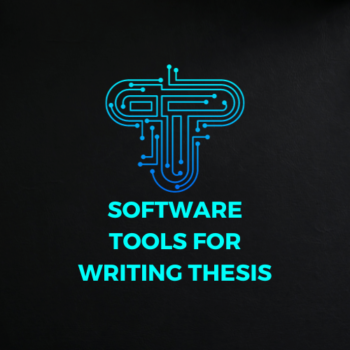
Crafting a thesis may seem challenging, but employing suitable software tools transforms it into a more structured and approachable undertaking. Delve into these potent resources to simplify your research, elevate your writing, and excel in your academic pursuits. This post elaborates on several tools commonly utilized for academic thesis writing.
Citavi is a comprehensive reference management and knowledge organization tool. It allows you to manage references, create citations, and organize your research materials. Citavi is commonly used by students and researchers.
Docear is a unique solution to academic literature management, i.e., it helps you organizing, creating, and discovering academic literature. This unique literature management tool designed specifically for academics when it comes to discovering, organizing and ultimately creating academic literature. A recommender system that helps you to discover new literature: Docear recommends papers which are free, in full-text, instantly to download, and tailored to your information needs.
3. Paperpile
Paperpile is a software for reference management that is just like Zotero and works like an extension for the Google Chrome browser, making it accessible for Linux, Mac, and Windows users. We suggest that you use it to discover and import information from stage platforms such as PubMed, arXiv, and Google Chrome. You can undoubtedly trade all the PDF archives and information to Google Drive, which implies you will have the chance to edit your papers collaboratively. This collaboration will not end, as you can send data back and forth between P Zotero and Paperpile, such as Mendeley.
4. RefWorks
RefWorks is accurate; select from thousands of customizable citation styles to use within authoring tools. Generate bibliographies and citations in a snap with any authoring tool. Use our integrations to insert citations in Word and Google Docs. Leverage thousands of pre-built citation styles and request new styles. Customize citation styles or create your own from scratch with the citation style editor.
5. SpellCheckPlus
SpellCheckPlus applies the same concept to the writing process. Rather than simply correcting your mistakes, it summarizes them into distinct categories. SpellCheckPlus offers feedback that not only improves your current project but also your writing and grammar at large. In other words, SpellCheckPlus is no mere editing tool; rather, it’s a teaching tool. And as even the very best writers know, there’s always room for improvement when it comes to how you deliver your message.
MindMup acts as an online mind-mapping canvas, perfect for representing ideas and concepts visually. Capture ideas at the speed of thought using a mind map maker designed to help you focus on your ideas and remove all the distractions while mindmapping. MindMup is also a terrific collaborative tool.
7. iA Writer
iA Writer gives you the essence of pure writing by providing an unobtrusive interface that lets you concentrate on your text. Despite its minimalistic approach, the application offers a variety of distinctive features that are specifically designed for writing-focused tasks. With iA Writer, you can gain unparalleled insight into your writing structure, detect superfluous words and clichés, and navigate through your documents and notes with ease.
Elicit uses language models to extract data from and summarize research papers. As a new technology, language models sometimes make up inaccurate answers (called hallucinations). They reduce hallucinations and increase accuracy by: training our models on specific tasks; searching over academic papers; and making it easy to double-check answers. Elicit only shows you papers that actually exist and are part of the scientific literature.
9. Lucidchart
It is an online diagramming tool to create flowcharts, diagrams, and visuals. Lucidchart is an intelligent diagramming application that brings teams together to make better decisions and build the future. Lucidchart helps users sketch and share professional flowchart diagrams, providing designs for anything from brainstorming to project management.
10. Trinka AI
Trinka is an online grammar checker and language correction AI tool for academic and technical writing. Trinka finds difficult errors unique to academic writing that other grammar checker tools don’t. From advanced English grammar errors to scientific tone and style, Trinka checks it all! Trinka goes beyond professional grammar checks and enhances your writing for vocabulary, tone, syntax, and much more. Make your point confidently with Trinka.
11. WhiteSmoke
WhiteSmoke renders you with the highest quality proofreading abilities available, correcting not only simple spelling mistakes like old-fashioned word processors but everything from grammar, word choices, and even style mistakes, all without breaking a sweat.
https://www.ref-n-write.com/blog/academic-writing-tools-and-research-software-a-comprehensive-guide/
Leave a Reply Cancel reply
Your email address will not be published. Required fields are marked *
Save my name, email, and website in this browser for the next time I comment.
Thank you for visiting nature.com. You are using a browser version with limited support for CSS. To obtain the best experience, we recommend you use a more up to date browser (or turn off compatibility mode in Internet Explorer). In the meantime, to ensure continued support, we are displaying the site without styles and JavaScript.
- View all journals
- Explore content
- About the journal
- Publish with us
- Sign up for alerts
- TECHNOLOGY FEATURE
- 31 March 2020
Synchronized editing: the future of collaborative writing
- Jeffrey M. Perkel
You can also search for this author in PubMed Google Scholar
Illustration by The Project Twins
Draft scientific manuscripts are typically confidential. So, when Elana Fertig was asked to take a look at an in-development paper on a functional gene-annotation strategy, she expected to receive the file in a private e-mail. What she got was a public announcement, shared on Twitter.
Access options
Access Nature and 54 other Nature Portfolio journals
Get Nature+, our best-value online-access subscription
24,99 € / 30 days
cancel any time
Subscribe to this journal
Receive 51 print issues and online access
185,98 € per year
only 3,65 € per issue
Rent or buy this article
Prices vary by article type
Prices may be subject to local taxes which are calculated during checkout
Nature 580 , 154-155 (2020)
doi: https://doi.org/10.1038/d41586-020-00916-6
Related Articles

- Communication

China seeks global impact and recognition
Nature Index 05 JUN 24

Chinese research collaborations shift to the Belt and Road

A guide to the Nature Index

Misinformation poses a bigger threat to democracy than you might think
Comment 05 JUN 24

Misunderstanding the harms of online misinformation
Perspective 05 JUN 24

Scaling neural machine translation to 200 languages
Article 05 JUN 24

AI’s keen diagnostic eye
Outlook 18 APR 24

So … you’ve been hacked
Technology Feature 19 MAR 24

No installation required: how WebAssembly is changing scientific computing
Technology Feature 11 MAR 24
Sir Run Run Shaw Hospital, School of Medicine, Zhejiang University, Warmly Welcomes Talents Abroad
Qiushi Chair Professor; Qiushi Distinguished Scholar; ZJU 100 Young Researcher; Distinguished researcher
No. 3, Qingchun East Road, Hangzhou, Zhejiang (CN)
Sir Run Run Shaw Hospital Affiliated with Zhejiang University School of Medicine
Proteomics expert (postdoc or staff scientist)
We are looking for a (senior) postdoc or postdoc-level staff scientist from all areas of proteomics to become part of our Proteomics Center.
Frankfurt am Main, Hessen (DE)
Goethe University (GU) Frankfurt am Main - Institute of Molecular Systems Medicine
Tenured Position in Huzhou University School of Medicine (Professor/Associate Professor/Lecturer)
※Tenured Professor/Associate Professor/Lecturer Position in Huzhou University School of Medicine
Huzhou, Zhejiang (CN)
Huzhou University
Electron Microscopy (EM) Specialist
APPLICATION CLOSING DATE: July 5th, 2024 About the Institute Human Technopole (HT) is an interdisciplinary life science research institute, created...
Human Technopole
Post-Doctoral Fellow in Chemistry and Chemical Biology
We are seeking a highly motivated, interdisciplinary scientist to investigate the host-gut microbiota interactions that are associated with driving...
Cambridge, Massachusetts
Harvard University - Department of Chemistry and Chemical Biology
Sign up for the Nature Briefing newsletter — what matters in science, free to your inbox daily.
Quick links
- Explore articles by subject
- Guide to authors
- Editorial policies
Better Writing Begins with the Right Tools
Word processing software has not only changed the way we write; it’s changed the way we read. It pays to think about what we want from our writing tools.
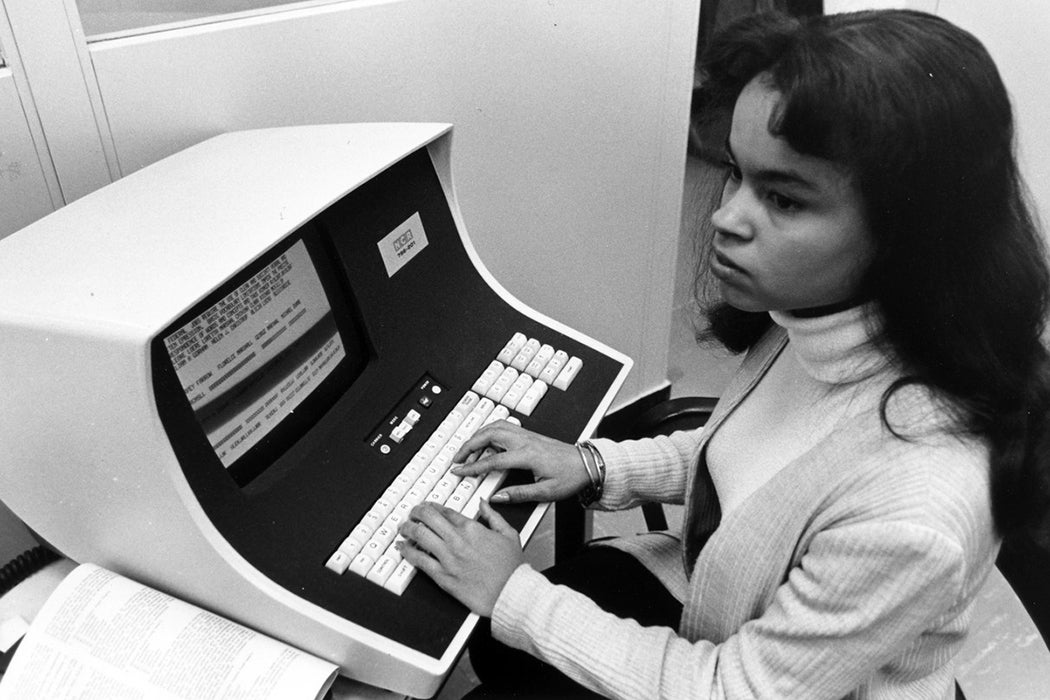
I have a theory that for writers, digital writing tools are just as influential as the mason’s choice of a particular compass or square.

Historian Lon Shelby wrote extensively about the building practices of the medieval masons behind the creation of such cathedrals as Chartres, iconic buildings that owe their creation and execution to the specific tools masons adopted for measurement and layout. “[U]ntil the history of their tools is adequately described,” Shelby writes, “the achievements of medieval masons cannot be properly evaluted from a technological point of view.” Shelby locates the geometry of these iconic buildings in the specific types of compass and square that masons had access to in the medieval era.
Is it really so different for current-day scribes? It’s not hard to goad writers into drawing virtual blood by asking them to expound on the relative merits of Ulysses and Bear , Markdown and rich text, or Microsoft Word vs Google Docs. And who isn’t a writer these days? From academics and students to corporate bloggers and analysts, there are few professionals who don’t spend at least some of their time cranking out paragraphs. Email alone ensures that most of us distribute more words per day than our grandparents might have sent forth in a year.
For all the time we spend cranking out words at a keyboard, however, we rarely stop to ask how all that keyboard time affects the way we write and communicate . It’s not just the keyboard that shapes our prose, of course; far more influential is the software in which we do our writing. That’s why it pays to think about what we want from our writing tools: not just as individual writers and communicators, but as readers and human beings with a stake in the ongoing evolution of our written culture.
The impact of our writing environment is on my mind because my writing process has just been transformed by Scrivener , an writing application I purchased several years ago but have only begun to properly use. I am a bit of a software junkie, so there’s nothing unusual about me trying out a new app as part of my endless quest for productivity perfection , or returning to an app I’ve tinkered with in order to take it for a more dedicated spin. I regularly cycle through new email clients, task managers, note-taking applications, data analysis tools, and image editors.
Writing software is more essential and intimate than any of these, because writing is thinking. How we structure the writing process shapes not only how we articulate our ideas to the world, but also, how we work through those ideas ourselves. The digital environment in which we do that work may feel crucial to those of us who earn a living through our writing, but this environment should matter to anyone who does significant amounts of writing for work or leisure.
If you’ve been using the same writing software for years and years, as I have, it’s easy to stop thinking about the impact your tools have on the day-to-day experience of writing. For the past decade, almost all my short-form writing has been drafted in Evernote, and for twenty-five years, all my long-form writing has taken place in Microsoft Word. I’m not giving up either of those tools, but spending the past month writing in Scrivener has reminded me that new tools enable new thoughts and new ways of working.
Because Scrivener makes it so easy to slice up and reorganize pieces of a document, it profoundly changes the process of writing and revision, and the balance between them. Stergios Botzakis summarizes Scrivener’s most useful features in his article on digital writing tools for students:
Students may use the binder, which acts as the project’s table of contents, to create chapters and scenes within chapters.…Students may rearrange the narrative by clicking and dragging chapters and scenes in the the binder, or by moving index cards on the virtual cork board….After adding chapter or scene summaries, student writers can alternate views between the manuscript, outline mode and corkboard.
For clues about the potential impact of a purpose-built writing tool, just look back a few decades to the emergence of the word processor. In those early days, it was considered a shareable finding to observe, as Francis A. Hubbard did in a 1984 review of several books on word processing: “ I know perhaps a dozen people who write a great deal on word processors , and all of them concede instantly that their writing process has been changed.”
The “gee whiz” delight I’ve experienced in my love affair with Scrivener is much in evidence during those heady days of early word processing. Matthew Kirchenbaum has written an entire book on the impact of word processing , the seeds of which appear in his article on how it transformed the work of John Updike:
Like many others [Updike] was at first captivated by the strange new device, declaring it “dazzling” more than once. Evidence of writers test driving their first word processor is a minor genre in their personal papers. One of the best known examples comes from Russell Banks when he was writing the novel that became Affliction : “STILL VERY MUCH LEARNING TO THINK ON THIS MACHINE,” he wrote in all caps at the beginning of a document that is a kind of stream-of-consciousness exploration of its capabilities. “STRANGE EXPERIENCE, UNFAMILIAR MIXTURE OF SPEED AND SLOWDOWN.” A similar page by Salman Rushdie survives in his collection at Emory University. Stephen King, meanwhile, wrote a short story, “The Word Processor,” which was published in Playboy and stands as the first extended fictional treatment of the technology.
The kinds of praise that many writers, students, and writing teachers lavished on the emergent technology of word processing points to the very particular ways it changed the practice of writing. In an anecdotal assessment of her college students’ use of word processing in her English, Dawn Rodrigues writes that
I observed various ways in which the computer was affecting my students’ progress. First of all, the computer seemed to help reduce the students’ writing apprehension . Students who at the beginning of the semester wrote (in early journal entries) of being nervous about writing showed no anxiety at all as the course progressed. For instance, one student who couldn’t even think of an idea for a journal entry on the second day of class blossomed when he began writing on the computer. He explained in his journal that he wasn’t afraid to express himself because he knew that he could immediately delete any sentences which embarrassed him. Another student said that he liked writing with computers because he forgot to worry about what he was saying. He just enjoyed seeing the words appear.
Yet for all the subjective joy and liberation of word processing, a wide range of studies questioned whether it actually led to better writing. If word processing left the composition teachers of the world a bit underwhelmed, it’s because it facilitated plenty of tinkering, while doing little to foster the kind of large-scale editing and rethinking that can really move a piece of work forward. As Richard M. Collier noted in a 1983 article,
the use of a word processor for revising purposes did not enhance the quality of their written products . This would seem to reflect that their revision strategies centered on words, phrases, and clauses, and were, therefore, concerned primarily with matters of diction and with changes which were sometimes minimal, often trivial, and occasionally detriment.
A 2010 article includes Collier’s work in a round-up of studies offering decidedly mixed assessments of word processing’s effects on writing quality. The article includes research on how word processing affects the revision process among students, noting that “[T]he fact that computers have made global revision easy has led some to assume that it has made global revision more common. But the ease of revision afforded by today’s word processing may not have resulted in more students doing global revision.”
This complaint about word processing is exactly what sent me in pursuit of a new writing environment. I’m no stranger to doing large-scale edits in Word; there was lots of big-picture rearranging involved in writing my dissertation, and later, in writing my series of ebooks . But it was a painful process, because Word (like most word processors and text editors) is set up as if the complete article (or essay, or report, or book) is the fundamental unit of work. Sure, you can move stuff around by cutting and pasting, but you have very limited options for keeping the overall structure of your work in mind as you do. Word is fundamentally a tool designed to facilitate the modest changes described by Collier.
Scrivener, on the other hand, is set up to facilitate what Dave and Russell refer to as “global revision.” It encourages writers to slice their work up into the smallest viable units: not just chapters or even sections, but individual scenes, quotes or arguments. (To write this article in Scrivener, I imported each of the quotes you read above as individual documents, so that I could pull them in and rearrange them at will.) When you look at your work through the constant lens of its component parts, it’s much easier to undertake ambitious restructuring—not just technically easier, but conceptually easier, because you can see the parts that make up the whole.
While Scrivener has plenty of devotees among novelists, authors, academics, screenwriters, and even some bloggers, it’s still far from overtaking word processors like Word and Google Docs as the day-to-day context in which most business and personal writing occurs. If that necessarily limits its short-term impact on our literary or journalistic culture, don’t underestimate the impact it could have in the long run.
That’s because Scrivener is only one of a growing range of tools designed to support the writing process in new ways.
Think of the blogging platform Medium , which built its writing and reading community around the uncluttered, reliable interface it offers writers. More and more of my articles begin their life in Medium, because the minimal set of formatting options keeps me focused on the writing. And there’s nothing like being one click away from a pre-fab audience to keep a writer honest.
Of course some writers need their minimalism even more minimal. For people who get distracted by bells and whistles like font choices or a boldface, there’s the cult of Markdown editors: writing environments in which you add formatting through a secret vocabulary of symbols like **asterisks** (if you want boldface) or _underscores_ (for underlining). Markdown editors like IA Writer , Texts, and WriteMonkey catapult writers back to the golden age of the typewriter, but with the exciting benefit of being able to use the delete key.
Then there are the tools that support long-form writing while recognizing that long-form work is about more than file size. Along with Scrivener there’s Novlr , where your novel lives entirely in the cloud; Final Draft , which is designed for screenwriters; and Ulysses , which works for any writer, as long as they use a Mac. Each of them has been expressly designed around the writing process, though they differ as much from one another as writers do.
What all of these applications share is an insight that’s missing from your basic all-purpose word processor. It’s the insight that comes from looking at the impact of word processors on our written culture over the past thirty years, or for that matter, from looking at the impact of compasses on medieval masons. That insight? Our tools matter .
If you just need to get words on a page, well, by all means, use whatever text editor or note-taking app springs to hand. But if you’re actually trying to refine your practice or craft as a writer, choose the software tool (or tools!) that get you past your biggest limitations.
Just remember that choosing the right tools is only the first part of the job. As Shelby writes, “it was not the sophistication of the tools themselves, but rather the skill and ingenuity displayed in the use of those tools that made possible the great achievements of the medieval masons.”

JSTOR is a digital library for scholars, researchers, and students. JSTOR Daily readers can access the original research behind our articles for free on JSTOR.
Get Our Newsletter
Get your fix of JSTOR Daily’s best stories in your inbox each Thursday.
Privacy Policy Contact Us You may unsubscribe at any time by clicking on the provided link on any marketing message.
More Stories

- How Two Rebel Physicists Changed Quantum Theory

How the Universe Forges Stars from Cosmic Clouds

The Vital Near-Magic of Fire-Eating Fungi

The Long History of Live Animal Export
Recent posts.
- The Uneven Costs of Cross-Country Connectivity
- A Potash Primer
- Lessons for American Zionism from the “Free Ireland” Cause
- Rickshaw Men, Optical Computing, and Telegraph Flirting
Support JSTOR Daily
Sign up for our weekly newsletter.
Tips for Editing Your Research Paper (Checklist Included)
| Candace Osmond
Candace Osmond
Candace Osmond studied Advanced Writing & Editing Essentials at MHC. She’s been an International and USA TODAY Bestselling Author for over a decade. And she’s worked as an Editor for several mid-sized publications. Candace has a keen eye for content editing and a high degree of expertise in Fiction.
Writing a research paper requires more than correcting language errors, such as spelling and grammar mistakes. You must also ensure everything is factual and parallel to academic writing standards. I wish I’d known that when I was in university; it would have saved me a lot of headaches.
So, when editing your paper, what should you focus on? Over time, I learned a few things, and I will share them with you! Follow these tips to ensure your research paper is prepared for research publication. I also provided a checklist of everything to consider during the process.

What is the Importance of Editing in Research?

Take it from me, no matter what you’re writing, professional editing is always necessary for your documents. You might not notice the spelling errors and lack of substance in your literature review right after the writing process. That means you should read it several times to edit it.
Editing your research draft is essential to maintain the credibility of your work. You need to ensure that the academic paper follows an academic tone . As someone who generally writes fiction, I struggled with this. But, over time, I learned how to switch between the two.
Such a tone does not require the writer to relate to the readers. Instead, academic editing aims to convey the acquired knowledge in a particular field.
What are the Steps in Editing and Proofreading a Research Paper?
To produce a research paper that is impactful to the academic discipline, you must edit and proofread it at multiple levels.
- Determine your editing purposes. Identifying your objectives will help you pick the appropriate approach and tools for the editing process.
- Revise paper. Examine the main point of your research paper and your evidence. Check if the body supports your thesis and if everything is properly cited.
- Make the edits. In this step, you should conduct the grammar and spelling check. Look for contextual errors and tonal inconsistencies too.
- Look for plagiarism. Use software programs like Scribbr or Turnitin to perform a plagiarism check.
- Follow the established style guide . Check if the research article follows the preferred style guide, whether APA, AP, MLA, or Chicago.
- Proofread. The proofreading phase looks for errors previously missed before publishing.
Top Tips for Editing Your Research Paper

Once you know the basic steps to editing a research paper, here are my tips to make your life easier. These work for me and not only helped me produce quality papers, but even cut down the time it took to produce them.
Choose Your Preferred Method of Editing
Your editing efforts should be structured and organized so you can develop a stable process of editing.
You already know that you edit from the bigger picture to minor details like grammatical errors and punctuation errors. But you have to decide your specific strategies. Will you be hiring a proofreading service? Which resources and tools will you use?

An ideal editor knows how to perform revisions and edits on different programs. For instance, Grammarly might help you with run-on sentences, while Hemingway can help with conciseness. I’d suggest you use both in tandem.
Find an Environment Where You Can Focus
Any professional editor will tell you the importance of a serene workplace for a good editing experience of book manuscripts and research papers. It will keep your mind focused on all aspects of writing, including spelling and grammar checks.
A clean desk and proper lighting will also help you notice more significant writing mistakes. Remember to take a break in between aspects of writing.
For me, it was the public library. I had a loud roommate, and we lived in an old Victorian home that was poorly converted into apartments, so I always heard the neighbors making noise. It was near impossible to concentrate. So, after classes were done for the day, I’d head to the library for a couple of hours to get the bulk of my research and editing done.
Focus on One Editing Issue at a Time
Many university students find the editing processes an arduous task because they try another editing approach while not yet finished with one. The reason we need to follow several steps to editing is to avoid confusion.
Once I learned this tip, it was smooth sailing. Yes, it sounds like more work, but it’s really not. When scanning a document for several types of issues, you’re more likely to miss things. So, scan for one issue at a time, and you’ll actually do a better job in less time. Trust me.
Focusing on one at a time will help you spot the huge and minor errors on the entire document. It also allows you to spot both English-language errors and contextual errors in the research paper.
Make Sure All of Your Work is Accurate
Accuracy is a crucial factor in editing any English manuscript. Aside from checking the elements of grammar, the journal editor should also check the facts the author is writing. Sometimes, they might perform additional editing to correct errors previously missed.
The biggest difference between proofreading and editing is that proofreading looks for mistakes that previous copy editors didn’t spot. They look at all aspects of writing to make the perfect paper before publication.
A proofreader might need a checklist of key questions to look for, from spelling to punctuation errors.
Don’t Always Rely on a Grammar Checker
An online grammar checker won’t be able to replace qualified editors and their complex tasks throughout the editing process. Yes, it’s a great tool to help the process, but don’t rely on it wholly.
Some artificial intelligence apps can detect improper tone based on the target audience you set. Others can even help with your sentence structure and writing styles. But they can’t help you with producing a smooth flow of ideas.
Tools like Grammarly, ProWritingAid, and Ginger won’t help you with the manual revision process. Only your human judgment can decide how excellent your points are. You need to check whether the abstract of your academic document is complete with the necessary info.
Don’t Make These Super Common Mistakes in Research Paper Editing
Here are some research paper editing mistakes to avoid. You’d be surprised how many people do these.
Changing the Research Questions or Problem
Your editing objectives for your research paper should not include changing one research question or problem. Otherwise, you will be in huge ethical trouble for manipulating the findings.
Expert editors agree that the methods of editing a research paper only include following an academic writing style guide and making the paragraph structure logical. You may change a few words on the findings to produce quality writing. But never change the numbers.
It’s not enough that you know common language errors and editing stages. Proper editing requires knowledge of the ethical guidelines when research editing.
Using Ineffective Keywords
Qualitative research paper editing entails using appropriate keywords in the paper draft. It’s a common issue in subject-area editing since many writers and editors overuse or underuse keywords.
Content editing is one of the stages of editing that looks at the style of writing, institutional needs, and more to lift it to a publishable standard. Pick only four to six words that frequently recur throughout the paper.
Not Fixing the Format
Your task is not just to perform editing for revision. It’s not enough for the editor to re-write sentences, conduct a spelling check, or fix style errors. The copy editor, proofreader, and format editors should have enough editing practice to fix formatting issues.
These stages of writing include aligning the paragraphs appropriately and formatting the citations according to the style guide. Font style, page numbers, and paragraph breaks will help you create an impactful research manuscript.

Enhance Your Editing Efficiency
Editing is a systematic endeavor. Whether you’re a college, university, or graduate student, I hope this article gives you tips for editing your research paper.
Remember to edit your paper more than once. Start from the bigger picture issues until the minor details like misspellings and grammar slip-ups. Use the editing checklist above to revise, edit, and proofread your academic document.
Grammarist is a participant in the Amazon Services LLC Associates Program, an affiliate advertising program designed to provide a means for sites to earn advertising fees by advertising and linking to Amazon.com. When you buy via the links on our site, we may earn an affiliate commission at no cost to you.
2024 © Grammarist, a Found First Marketing company. All rights reserved.
Training videos | Faqs

Popular Writing Tools and Software for Authors and Researchers
Overview | Writing Software | Reference Management Software | Research Tools | Grammar Checking Tools
Whether you are writing an article, research paper, essay, blog, and dissertation or PhD thesis, it is important to choose an appropriate writing software tool for your work. The choice of writing software comes down to your personal taste. Everyday users are happy to shed a few dollars to purchase a well-known writing tool such as MS Word. Tech savvies welcome open source projects such as OpenOffice and LibreOffice. Whereas, research community is much more adventurous and have embraced the type-setting system, Latex as their writing medium. Blog writers and journalists use online writing tools such as GoogleDocs and DropBox Paper as they find these tools perfect for collaborating with others. Novel writers use more fancy writing tools such as Scrivener to organize their ideas and create a storyboard to help them write. In this blog, we review some of the common writing tools and software used by writers.
1. Microsoft Word
MS Word is the most widely used tool in the writing community. It comes with great features and keeps evolving with each version. Some of the popular features include: Grammar and spell checker, Thesaurus, text formatting and aligning, bullets and numbering, inserting watermarks, page numbers headers and footers, readymade templates and mail merge. You can install plenty of third-party plugins and apps to enhance your experience. A good choice of plugins can save you a lot of time and effort with your writing.
You can use office online for free and save your documents in the cloud; all you need is a Microsoft account. If you need a desktop version, then you have to purchase a copy. Some universities offer free copies to students. Office 365 offers a subscription model that allows you to install the latest version of MS office on up to 5 computers. You will also have access to the online version of MS Office and up to 1TB cloud storage.
Useful Links:
- Features of MS Word
- Advantages and disadvantages of MS Word
- Plugins and apps for MS Word
- About MS Office 365
LaTeX is a typesetting system for the communication and publication of scientific documents. It is free software. The writer writes in plain text and then adds markup tags to stylise text. Latex is widely used for publishing scientific papers, thesis, and books in many fields. Latex offers a wide variety of features including cross-referencing tables and figures, bibliography management, page layout, chapter and section headings, and numbering. It has a steep learning curve, and beginners will take some time to build up expertise in Latex. People who have no or very little experience in programming will take a while to get used to Latex since it is similar to learning a new scripting language. Most publishers make a Latex template available alongside MS Word template as a part of the author submission instructions.
Complex equations can be beautifully formatted in Latex by inserting relevant tags. Latex produces a .tex file which in turn can be converted into a wide variety of output formats such as PDF, HTML, etc. using TEX distribution packages such as MikTex. The major disadvantages of using Latex is that it does not come with an inbuilt spell checker or graphical user interface. Latex comes with several templates – book, report, article, letter or beamer. You should define the document class in your .tex file so that Latex can include all the necessary packages to produce the final output. One of the biggest advantages of using LateX is that you can concentrate on the writing and leave the formatting to Latex. You don’t have to worry about figures getting out of place because you hit a key by mistake. Everything is taken care of in the backend. One of the powerful features of Latex is bibliography management. Essentially the whole process of referencing and generating bibliography is automated using BibTeX or BibLaTeX.
- Latex tutorial
- Benefits of Latex
- Advantages and disadvantages of using Latex
- BibTex tutorial
3. Open Office
OpenOffice is an open-source product that mimics MS Office. It is completely free, and the suite of products it offers includes Writer (Word), Calc (Excel), Impress (Powerpoint) and Base (Access), plus a vector graphics editor, Draw (Visio). The default file format of OpenOffice is OpenDocument Format (ODF). However, you can open and save documents with DOC and DOCX extensions. OpenOffice is available for Windows, Linux, and macOS, and the tool is distributed under Apache License. Many paid features of MS Word such as PDF export are available for free in OpenOffice. There are no hidden charges for add-ins and upgrades. The tool supports over 40 languages and includes Grammar and spell checker.
OpenOffice might exhibit some formatting issues while working with DOC/DOCX files. These issues might be apparent while working with word files with a lot of pictures, columns, headers and fancy text alignments. OpenOffice remains quite popular as it is downloaded approximately 100,000 times a day. Another important advantage is that it is open source and you can customize the tool to your requirements. It is ideal for small businesses and startups if they are not so keen on shedding money for buying the MS Office site licenses.
- OpenOffice vs. MS Office
- Benefits of using OpenOffice
- OpenOffice Writing tips
- OpenOffice Writing training and ideas
4. LibreOffice
LibreOffice is a free open office suite that is similar to OpenOffice. LibreOffice project branched out from the OpenOffice project in 2010 and is maintained by ‘The Document Foundation’. You might notice some minor differences in features between OpenOffice and LibreOffice. However they are broadly similar regarding layout and functionality. Both projects are well-maintained. LibreOffice team tends to release very frequent updates with minor feature increments, but OpenOffice project tends to release new versions with major feature updates. LibreOffice enjoys a better recognition among the Linux community as it comes packaged with Linux, whereas you must download and install OpenOffice manually.
- LibreOffice review
- OpenOffice vs LibreOffice
- OpenOffice and LibreOffice feature comparison
- Should you switch from OpenOffice to LibreOffice?
5. Scrivener
Scrivener is a writing tool that allows you write and manage a long document such as a Ph.D. Thesis or a novel with a lot of chapters, sections, and subsections. Scrivener is available for both Windows and Mac. One of the great features of Scrivener is that you can split your writing into small chunks or snippets. You can move these chunks around easily and reorganize your content. You can visualize your document using different views. One of the views displays a short message summarising each chapter as a sticky note stuck on a board. You can create folders and subfolders to store documents, images, PDFs, audio, video, and web pages that you need for your writing. You simply drag and drop these into your writing easily in a single click. After finishing the text, the user can export the project into a wide variety of formats. Scrivener is not a free software tool; you can get a copy for approximately $45.
- Scrivener for Dummies book
- Reasons for switching to Scrivener
- Benefits of Scrivener
- Scrivener online course and help
7. Google Docs
Google Docs is a web-based writing software offered by Google. The suite includes Google Docs, Google Sheets and Google Slides which are simplified versions of MS Word, MS Excel and MS PowerPoint respectively. You can create and edit files online. One of the powerful features of the Google docs is the ability to collaborate with other users online. The changes made by multiple users on the same documents are highlighted with a user-specific color. Google docs are extensively used in the publishing industry where the articles predominantly contain text and pictures with minimum formatting. This Google project is actively maintained, and there are frequent product updates.
There is a limit on the size of the documents you can create on the Google Docs. The documents cannot be larger than 50MB, spreadsheets have a limit of 2 million cells, and presentation cannot be larger than 100MB. The images in the documents and presentation slides cannot be larger than 50MB. Users can load and export documents in a wide variety of formats such as DOC, DOCX, TXT and ODF file formats. You can upload documents to Google Drive cloud storage. You can either download Google Drive App to your desktop or use the online interface to import and export documents. There are handy research tools that allow you to search for academic papers and quickly insert the appropriate footnotes or citations in a variety of citation formats to Google Docs. You can install third-party add-ons. Some of the popular add-ons include easy bibliography creator, diagramming tool, and table of contents generator.
- How to use Google Docs?
- Tips and tricks for Google Docs
- How to use Google drive?
- Google drive tips and tricks
8. DropBox Paper
Dropbox Paper, or simply Paper, is a web based document-editing service developed by Dropbox. Paper is broadly similar to Google Docs in functionality. It has a very lightweight interface and is capable of supporting a wide variety of content including images, Google spreadsheets, data from Github, YouTube videos, Spotify playlists, and plain old code. This makes DropBox Paper easy to customise for a wide variety of projects. Documents can be easily shared with others. Documents can be shared individually or added to a folder with group access. You can also invite people to edit (or view) a file via email or with a specific URL. It is so easy to create tables and image galleries in Dropbox Paper document. You can create a table by simply clicking on an icon and specifying the number of rows and columns. Image galleries can be created by simply dragging and dropping images. DropBox paper also offers plenty of shortcuts that will save you a lot of time. For example, typing # followed by space will create an H1 header, and typing a hyphen followed by a space will start an unordered list. DropBox will notify the changes made to the DropBox paper documents via the bell icon in the top left-hand corner. The version control system is very good. You can see all the changes that have been made to the documents and who made the changes. It is easy to navigate to various sections of the paper as the headings are listed as links in the left-hand panel. One of the downsides of using DropBox paper is that DOCX and MD (markdown ) are the only file formats available for exporting documents at the moment. Also, DropBox Paper does not currently support spreadsheet and presentation formats. Hopefully, this will be included in the future updates.
- Google Docs vs. DropBox paper
- Reasons for choosing Dropbox paper
- Features of DropBox paper
- Tips and Tricks for using DropBox paper
Similar Posts
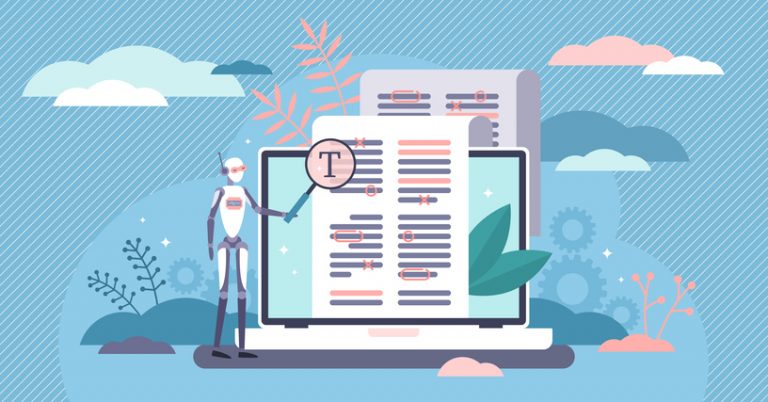
Scholarly Paraphrasing Tool and Essay Rewriter for Rewording Academic Papers
In the blog, we focus on academic and scientific paraphrasing software tools that help students to rewrite their essay into an academically acceptable format.

Self-Plagiarism – Similarity Checker Tool to Avoid Academic Misconduct
In this blog, we explain the differences between self-plagiarism and plain plagiarism, and demonstrate the benefits of Ref-n-write’s similarity checker tool.
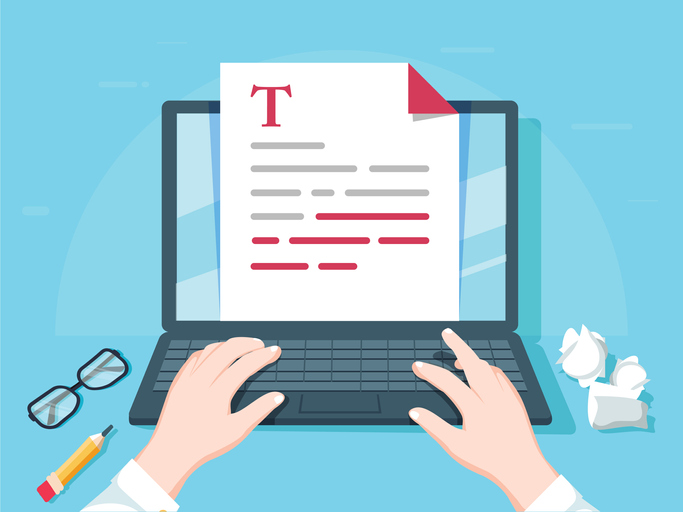
Plagiarism Checker and Plagiarism Detector Tools – A Review of Free and Paid Tools
In this blog, we review the most popular plagiarism checking tools available in the market from the perspective of cost and ease of use.

Top Referencing Tools and Reference Management Software for Academic Writing
In this blog, we have reviewed some of the popular referencing tools used by the scientific community from an academic writing perspective.

Top English Grammar Checkers and Sentence Correction Tools
In this blog, grammar checking software, grammar correction apps and online grammar checking sites are reviewed along with the discussion about various features.

Top Research Tools and Software for Academics and Research Students
In this blog, we review some of the useful tools for research that researchers can use to be more productive.
Given that the intro mentions all sorts of academic writing, there’s a severe lack of any mention of how these tools interact with referencing softwares. Mendeley, endnote, papers3, and many more I’m failing to mention…
Plugins are available almost exclusively for word and libreoffice, and little else. As beautiful as scrivener looks, and as much as I like the way it structures documents and lets you focus on the writing, without an easy way to cite-as-you-write and automatically generate a bibliography, it’s simply never going to make any huge in-roads as far as academia is concerned.
Timothy, For the purpose of an integrated software suite that incorporates every component of academic writing — research, writing, and citation management –you should look into Nota Bene (www.notabene.com). I note that I have no financial interest in the company.
most people use scrivener or scribus
Leave a Reply Cancel reply
Your email address will not be published. Required fields are marked *
Save my name, email, and website in this browser for the next time I comment.
- 7 Share Facebook
- 9 Share Twitter
- 6 Share LinkedIn
- 17 Share Email
- Link to facebook
- Link to linkedin
- Link to twitter
- Link to youtube
Academic Proofreading And Editing
Whether you’re writing a thesis, research paper, or PhD proposal, Proofed’s academic proofreading and editing services will help ensure your writing reads smoothly and your ideas are communicated effectively.

Enhance Your Academic Writing
No matter what you’re working on, with Proofed’s academic proofreading and editing services, you can rest assured that your writing will be clear and concise, with a strong academic style and tone.
We can even check references and citations in your work. Because good writing is vital for success in academia, our proofreading and editing services can help you achieve your career goals.
Experienced Academic Editors
Our team includes editors with PhDs and master’s degrees in a wide range of subject areas. We’ve also edited thousands of academic documents so we understand the high standard of writing required in academia and will use our skills and expertise to make your writing the best it can be.
Are You Looking To Publish Your Writing?
Proofed’s academic proofreading service has helped thousands of academics in many fields of study prepare their papers, reports, and articles for publication. Visit our researcher page to learn more about how we can polish your writing, thus increasing your chances of publication.
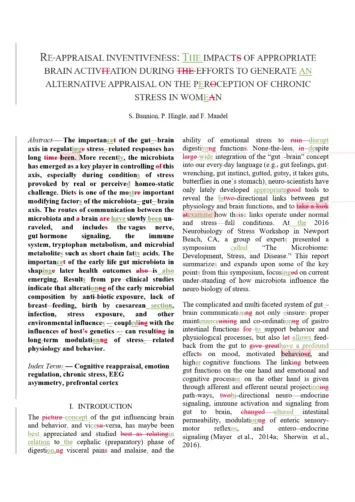
Make sure your writing is the best it can be with our expert English proofreading and editing
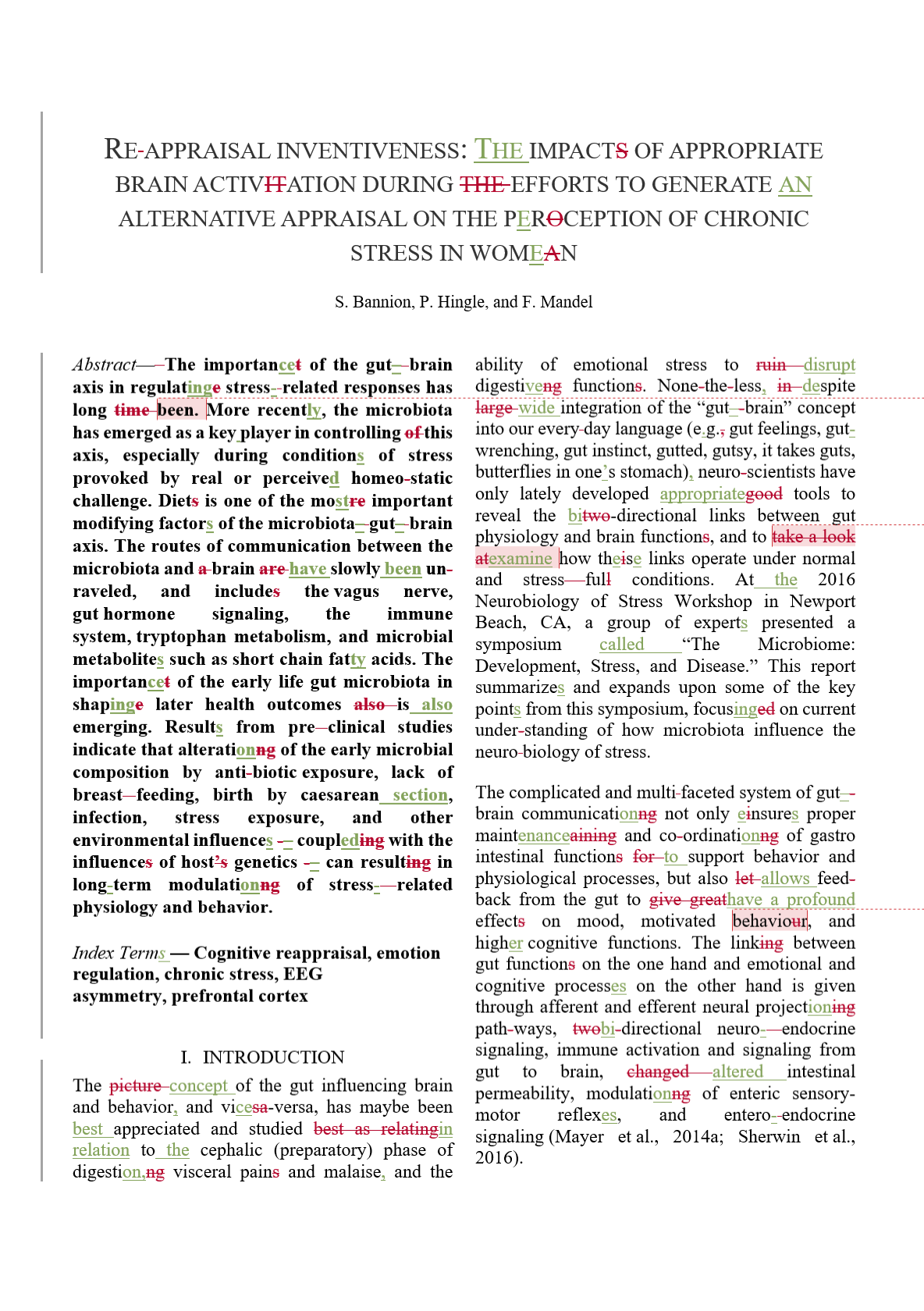
A Dedicated Team Of Expert Editors Working 24/7, 365 Days A Year
We pair your document with an editor who understands your field of study. If you’re happy with the results, let us know, and we’ll make sure the same editor works on all of your documents. That way, you can be sure the proofreading we provide will always meet your standards.

Expert Editor

Highly Educated Editors
Female Editors
Hold Graduate Degree
Qualified In Over
Subject Areas
How We Work With Academics
Lightning-fast delivery.
You’ll never miss a deadline with our speedy services: our Next-Day Guarantee means we’ll return any document up to 8,000 words long within 24 hours.
And if you need a faster turnaround, simply select your desired delivery speed when you submit your document. We have three options
We can also meet custom deadlines! Just let us know what you need.
* For documents up to 8,000 words
** For documents up to 3,000 words
Great Pricing
Our pricing is affordable and transparent – the cost is based on the exact length of your document. Check out our pricing calculator for an instant quote, and rest assured that you’ll receive the highest quality proofreading and editing for the best value on the market.
Referencing Expertise
Our team includes experts in various referencing styles and systems, including AMA, APA, MLA, Chicago, Harvard, Vancouver, and IEEE. No matter what style you’re using, though, we can check that your citations and references are correct and let you know if any information is missing. Visit our referencing page to learn more.
Subject-Matter Experts
Our team includes over 750 professional editors with backgrounds in a wide range of disciplines, so we’ll always match you with the best editor for your writing, whether you need help with a sociology dissertation, handouts for a music theory lecture, or a biology research paper.
24-Hour Support
Our support team is available around the clock to address any concerns or questions you have about your order. This means you’ll never be left in the dark, no matter where you are or what time it is.
We Work With Every Major Format
Our system supports over 15 document formats, making it easy to submit content for proofreading and editing. Click on a file icon below to learn more.
MS Powerpoint
Google Docs
Google Slides
Google Sheets
Illustrator
Select Your Document Type Below To Learn More
Research papers.
Present your findings with pride by having your research paper checked by our expert academic proofreaders.
Journal Articles
Prepare for publication by letting our expert academic proofreaders check your journal article for errors.
Let our expert academic proofreaders help you put the finishing touches on your PhD thesis or dissertation.
Make sure your arguments come across clearly by having your thesis checked by our expert academic proofreaders.
Research Proposals
Enhance your application by letting our expert academic proofreaders check your research proposal for errors.
Instant Quote
You can also upload a document to get an instant quote
Drag & drop your file
or browse your computer
Browse from your device
Drop your file here!
Your file is being uploaded!

Looking For The Perfect Proofreader?
We can help you improve everything from journal articles to theses. Let us show you how!
Purdue Online Writing Lab Purdue OWL® College of Liberal Arts
Welcome to the Purdue Online Writing Lab

Welcome to the Purdue OWL
This page is brought to you by the OWL at Purdue University. When printing this page, you must include the entire legal notice.
Copyright ©1995-2018 by The Writing Lab & The OWL at Purdue and Purdue University. All rights reserved. This material may not be published, reproduced, broadcast, rewritten, or redistributed without permission. Use of this site constitutes acceptance of our terms and conditions of fair use.
The Online Writing Lab at Purdue University houses writing resources and instructional material, and we provide these as a free service of the Writing Lab at Purdue. Students, members of the community, and users worldwide will find information to assist with many writing projects. Teachers and trainers may use this material for in-class and out-of-class instruction.
The Purdue On-Campus Writing Lab and Purdue Online Writing Lab assist clients in their development as writers—no matter what their skill level—with on-campus consultations, online participation, and community engagement. The Purdue Writing Lab serves the Purdue, West Lafayette, campus and coordinates with local literacy initiatives. The Purdue OWL offers global support through online reference materials and services.
A Message From the Assistant Director of Content Development
The Purdue OWL® is committed to supporting students, instructors, and writers by offering a wide range of resources that are developed and revised with them in mind. To do this, the OWL team is always exploring possibilties for a better design, allowing accessibility and user experience to guide our process. As the OWL undergoes some changes, we welcome your feedback and suggestions by email at any time.
Please don't hesitate to contact us via our contact page if you have any questions or comments.
All the best,
Social Media
Facebook twitter.

IMAGES
VIDEO
COMMENTS
Terms in this set (65) The appropriate software to use for writing and editing research papers is ________ software. word processing. Software that manages "back office" functions such as billing, production, inventory management, and human resources management is called ________ software. enterprise resource planning.
The appropriate software to use for writing and editing research papers is _____ software. word processing _____ software lets you perform calculations and numerical analyses. spreadsheet. When using a spreadsheet, the expression =D8-D17 is called a _____. formula.
1. Microsoft Word: Write Like a Pro. Microsoft Word is a popular word-processing program used for writing an essay, a dissertation, or other written academic requirements. It's a 1983 Microsoft Office application and is a widely-used office program.
Basic computer skills are essential for authors writing research papers because computers and technology have become a fundamental part of the research and writing process. As a new author writing a research paper, there are several essential software skills that can help you streamline the writing process, improve the quality of work, and ...
4. Grammar Checkers and Sentence Correction Tools. 1. Writing Tools and Software. Whether you are writing an article, research paper, essay, blog, and dissertation or PhD thesis, it is important to choose an appropriate writing software tool for your work. The choice of writing software comes down to your personal taste.
6. Authorea. The magazine "TechCrunch" describes Authorea as "a Google Docs for scientists". On the academic writing platform, you can write, edit, and insert citations, figures and data. And it's great for collaborative writing: Co-authors can access the same text at the same time, track the changes they made, insert comments and even live-chat during writing sessions.
Writing (and publishing) a peer-reviewed paper about a newly developed scientific software is arguably one of the best ways to do this—"software papers" can reach a massive number of potential users (even acting as advertisement for the software), are a great way to show that the software stands up to scientific scrutiny, and allow users ...
You can also use Hemingway App to improve your writing style. It is very hard use simple language when you are doing a research paper. This app helps you keep grounded by identifying problematic ...
This post elaborates on several tools commonly utilized for academic thesis writing. 1. Citavi. Citavi is a comprehensive reference management and knowledge organization tool. It allows you to manage references, create citations, and organize your research materials. Citavi is commonly used by students and researchers. 2.
Introduction. Proofreading/editing research papers comes with a number of additional considerations. These are documents with a particular structure and register, and writing for academia involves adhering to various conventions. If you don't have a background in writing/editing research papers and are unfamiliar with these conventions, take ...
In the case of qualitative research, thematic analysis can usually be done without software or using Excel. Nvivo is Atlas. widely used. Y ou can take a look and learn if you want. This is a list ...
Partners in editing. Most collaborative writing tools offer researchers a range of useful functions. Team members can keep documents private or share them with select collaborators; track changes ...
The appropriate software to use for writing and editing research papers is _____ software. Word processing. When using a spreadsheet, the expression =D8-D17 is called a _____. formula. When using a spreadsheet, SUM in the expression =SUM(B10:B16), is called a(n) _____. function.
Then there are the tools that support long-form writing while recognizing that long-form work is about more than file size. Along with Scrivener there's Novlr, where your novel lives entirely in the cloud; Final Draft, which is designed for screenwriters; and Ulysses, which works for any writer, as long as they use a Mac.Each of them has been expressly designed around the writing process ...
Qualitative research paper editing entails using appropriate keywords in the paper draft. It's a common issue in subject-area editing since many writers and editors overuse or underuse keywords. Content editing is one of the stages of editing that looks at the style of writing, institutional needs, and more to lift it to a publishable standard.
the writing process, improve the quality of work, and ensure that papers are formatted correctly. It covers word processing software, grammar correction software, bibliography management software, paraphrasing tool, writing tools, and statistical software. All of the tools described are free to use. Hence, it would help researchers from resource-limited settings or busy physicians who get ...
Overview | Writing Software | Reference Management Software | Research Tools | Grammar Checking Tools. Whether you are writing an article, research paper, essay, blog, and dissertation or PhD thesis, it is important to choose an appropriate writing software tool for your work. The choice of writing software comes down to your personal taste.
AcademicProofreading And Editing. Whether you're writing a thesis, research paper, or PhD proposal, Proofed's academic proofreading and editing services will help ensure your writing reads smoothly and your ideas are communicated effectively. Try For Free.
LaTeX users also have their web-based collaborative writing platforms such as ShareLaTeX, WriteLaTeX, and Authorea. Enriched by a number of add-ons, Google docs in particular has become a serious contender to traditional word processors. Add-ons such as equation writers, thesaurus, open clipart resource, and reference managers are available for ...
The Purdue On-Campus Writing Lab and Purdue Online Writing Lab assist clients in their development as writers—no matter what their skill level—with on-campus consultations, online participation, and community engagement. The Purdue Writing Lab serves the Purdue, West Lafayette, campus and coordinates with local literacy initiatives. The ...
8) The appropriate software to use for writing and editing research papers is _____ software. A) spreadsheet B) presentation C) word processing D) database word processing
Question: The appropriate software to use for writing and editing research papers issoftware.A. databaseB. word processingC. presentationD. spreadsheet ... The appropriate software to use for writing and editing research papers is word processing software.... View the full answer.
Here's the best way to solve it. software 8. The appropriate software to use for writing and editing research is A) spreadsheet papers B) presentation word processing D) database 9. All of the following are examples of database software except A) Oracle B) Microsoft Excel MySQL Microsoft Access 10.